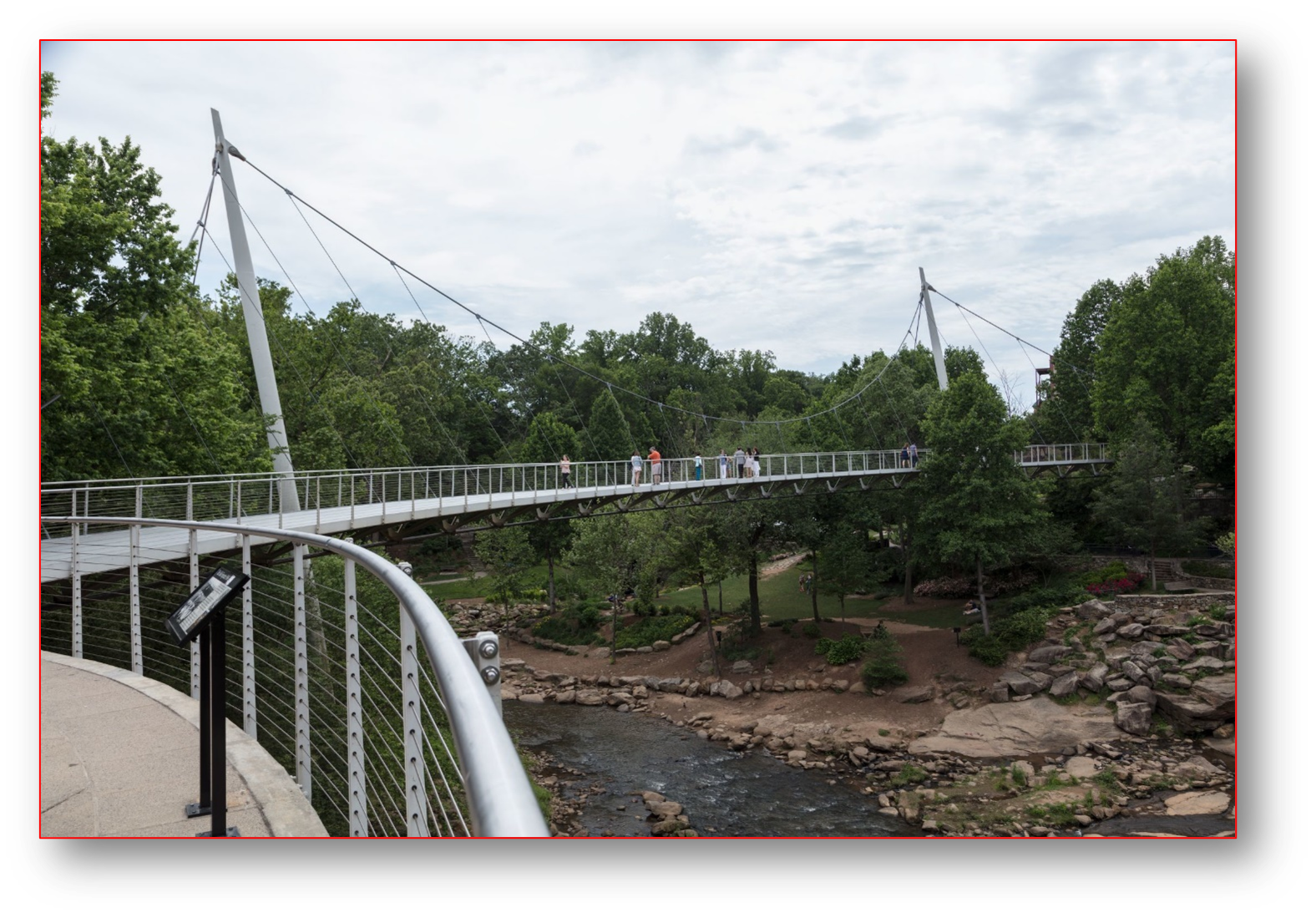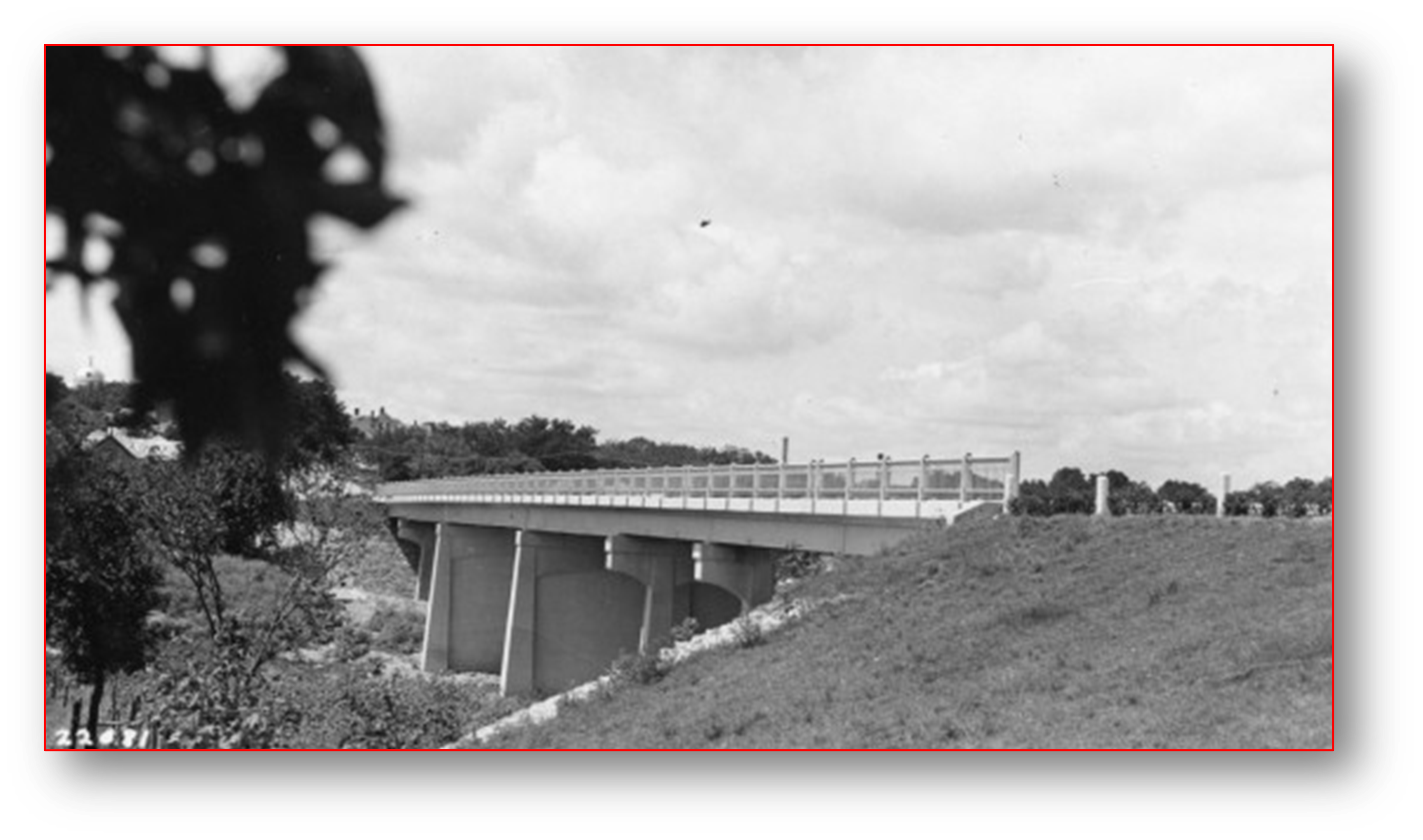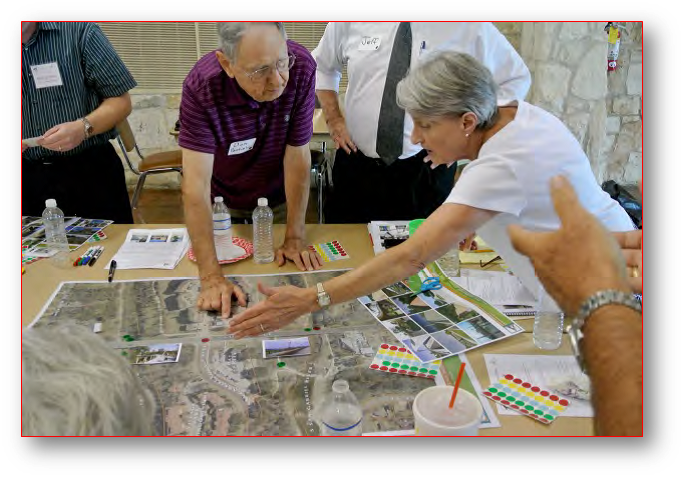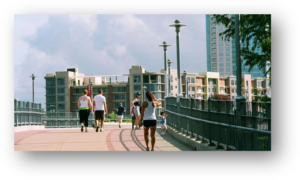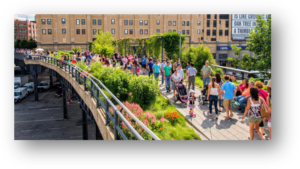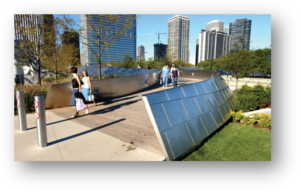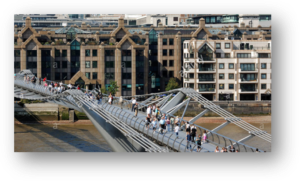The new pedestrian and bike bridge planned for the South & North San Gabriel Rivers gives Georgetown another opportunity to attract regional and national recognition with a new city landmark that overlooks our beautiful San Gabriel River.
The new bridge, which will be built alongside the Austin Ave Bridges, will connect to the San Gabriel park/trail system and link the Square & downtown to the Sheraton Hotel/Rivery development, the City’s west side, and ultimately to Lake Georgetown & Garey Park. The pedestrian bridge also gives us the opportunity to create a unique “gateway” for downtown Georgetown.
Instead of taking a traditional engineering approach to designing a basic utility bridge to accommodate pedestrian and bicycle traffic over the Rivers, hopefully the City will think outside the box and be creative in how they go about selecting the design for the new bridge.
Do we take the usual route and give the job to an engineering company without competition…or do we decide to be imaginative…and SMART?
First, a little history on how City Council decided to add a new freestanding pedestrian/bike bridge that will be constructed independent of the Austin Ave Bridges.
Actually, it all started back in 1939 when TxDOT used a unique (now historic) cantilevered-suspended span configuration to build the new Austin Avenue Bridges over the North & South San Gabriel Rivers on US Highway 81 (now Austin Ave).
The story continues…in 2015, TxDOT found that the 2 bridges needed repairs. The City then hired a number of engineers and proposed to replace the existing bridges with wider 5 lane bridges over both forks of the San Gabriel River.
Due to the historic nature of the bridges, TxDOT and the City were required to go through a TxDOT-lead federal process called Section 106 of the National Historic
Preservation Act to be eligible for federal funding. During exhaustive engineering studies, all consultants eventually determined that the existing bridges could certainly be repaired and didn’t have to be replaced.
So where did the idea of having a freestanding pedestrian/bike bridge come from?
It was actually a community-driven idea. During a well-attended City sponsored Public Meeting in June 2016 at the San Gabriel Park Community Center, the City divided up the public into various tables labeled by colors. Each table reported out their ideas for the bridges. The Green Table recommended a pedestrian/bike bridge that would be separate from the vehicular traffic bridges and that’s how it all began…back on June 29, 2016. That community-driven idea ultimately became Bridge Option 6-A… repair the existing bridges and build a new pedestrian/bike bridge.
Now that you know where the idea came from…how should the City go about designing the new pedestrian/bike bridge?
 I would like to propose that the City conduct a national Design Competition, in conjunction with the University of Texas at Austin’s School of Architecture. Personally, I would actually prefer the Texas Tech School of Architecture, my alma mater, but let’s just stick with the folks in Austin. The Design Competition should be linked to Georgetown’s newly approved Bicycle Master Plan that was developed with the assistance of graduate planning students from The University of Texas.
I would like to propose that the City conduct a national Design Competition, in conjunction with the University of Texas at Austin’s School of Architecture. Personally, I would actually prefer the Texas Tech School of Architecture, my alma mater, but let’s just stick with the folks in Austin. The Design Competition should be linked to Georgetown’s newly approved Bicycle Master Plan that was developed with the assistance of graduate planning students from The University of Texas.
The City has already done a number of design competitions for artwork and murals around town, so this competition fits nicely into how the City could become known as a Best Practice in the Arts & Architecture…an expanded version of “The Most Beautiful Town Square in Texas”.
The Design Competition would be a “juried” selection of the best concept that takes advantage of the San Gabriel River’s natural beauty, Georgetown’s historic past & future potential, the City’s 2030 Master Plan, and the new Bicycle Master Plan. A five-member jury would select the team that best responded to those requirements. The jury would include 4 leading architects and engineers from the region. The 5th voting “member” would be chosen via an online survey of Georgetown residents. The design teams of architects and engineers would submit conceptual designs tied to the City’s project budget, site requirements, project specifications, etc.
Other cities have issued similar design competitions for walk/bike bridges, like the Highline in NYC, the Fatih Vatan Street Pedestrian Footbridge in Istanbul, the Millennium Bridge in London, and the Liberty Bridge at Falls Park in Greenville, SC. Competition is always a good thing.
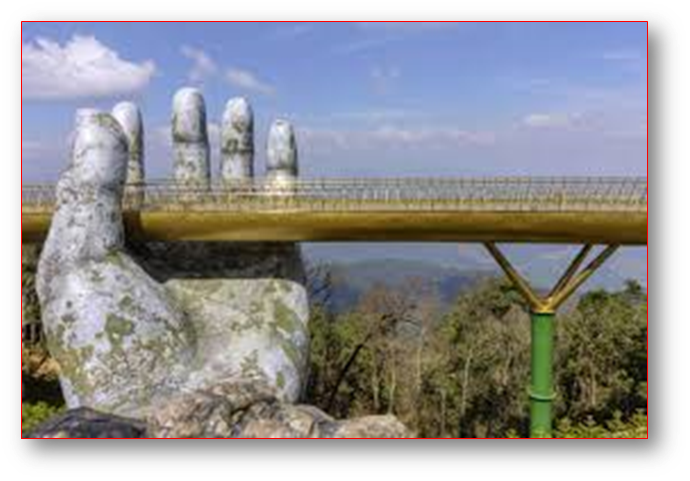 In researching this post, I found some really interesting and innovative pedestrian bridges that have been built around the world. I think my favorite pedestrian bridge is the “Golden Bridge” near Danang, Vietnam. The bridge is “held up” by 2 massive stone hands coming out of the hill’s rocky ledge…amazing. Now I’m certainly not proposing that design for a bridge going over the San Gabriel Rivers…or am I?
In researching this post, I found some really interesting and innovative pedestrian bridges that have been built around the world. I think my favorite pedestrian bridge is the “Golden Bridge” near Danang, Vietnam. The bridge is “held up” by 2 massive stone hands coming out of the hill’s rocky ledge…amazing. Now I’m certainly not proposing that design for a bridge going over the San Gabriel Rivers…or am I?
There are so many examples of how cities have used innovative approaches in developing and building pedestrian bridges that have become landmarks to the city’s creativity. The bridges not only fulfill their function to carry walkers and bikers, but have also become inspired gateways to their city, popular tourist attractions and catalyst for new economic growth.
In today’s crazy pandemic world, I think we all need more imagination in responding to our daily challenges.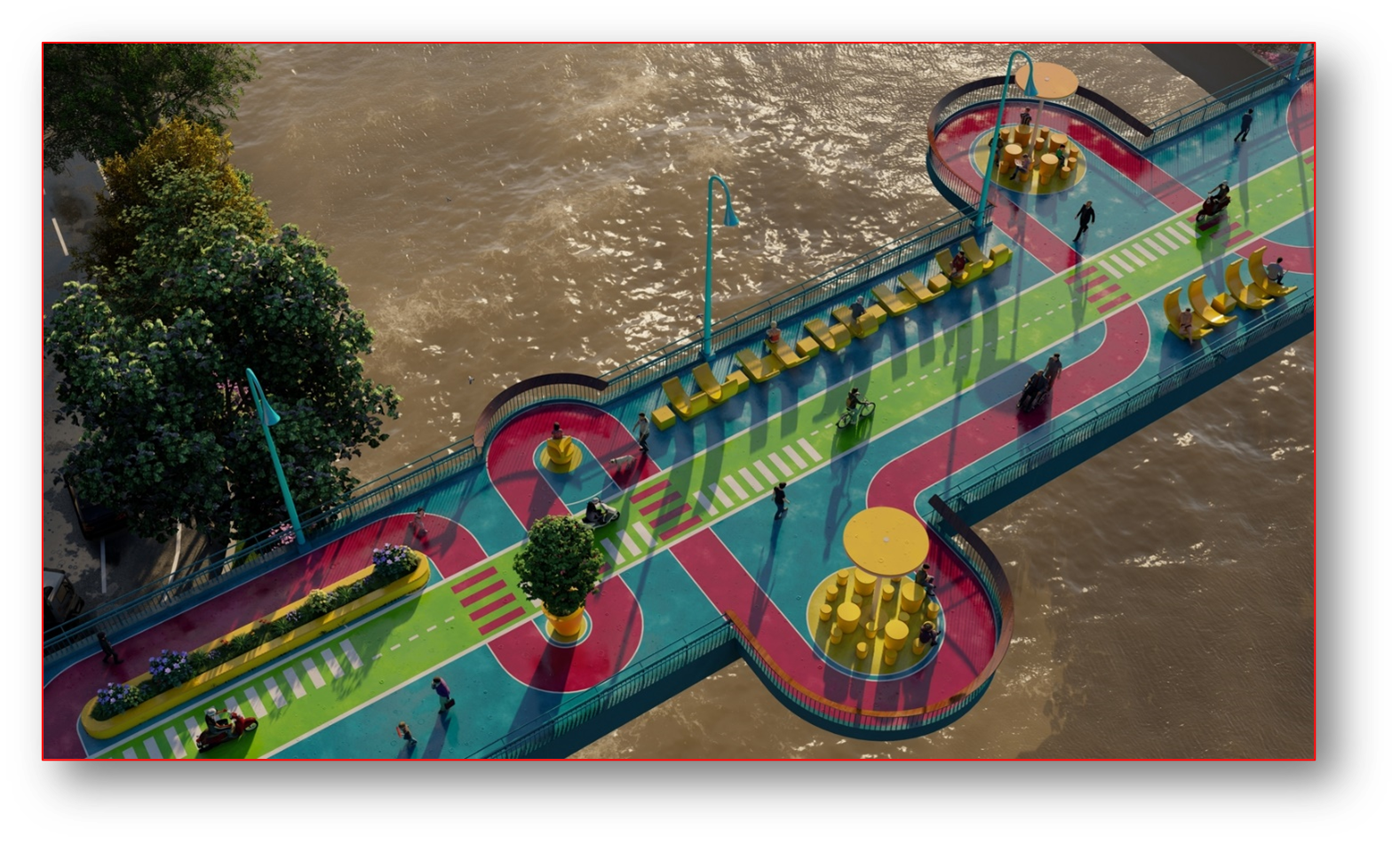
In Shanghai, China, they added creative, fun colors to a simple bridge. They utilized those fun colors to separate bikers from pedestrians…not that expensive, but very creative!
Take care, stay safe…and add some imagination to your day!
Larry
Here are some more photos of other award-winning pedestrian/bicycle bridges.

